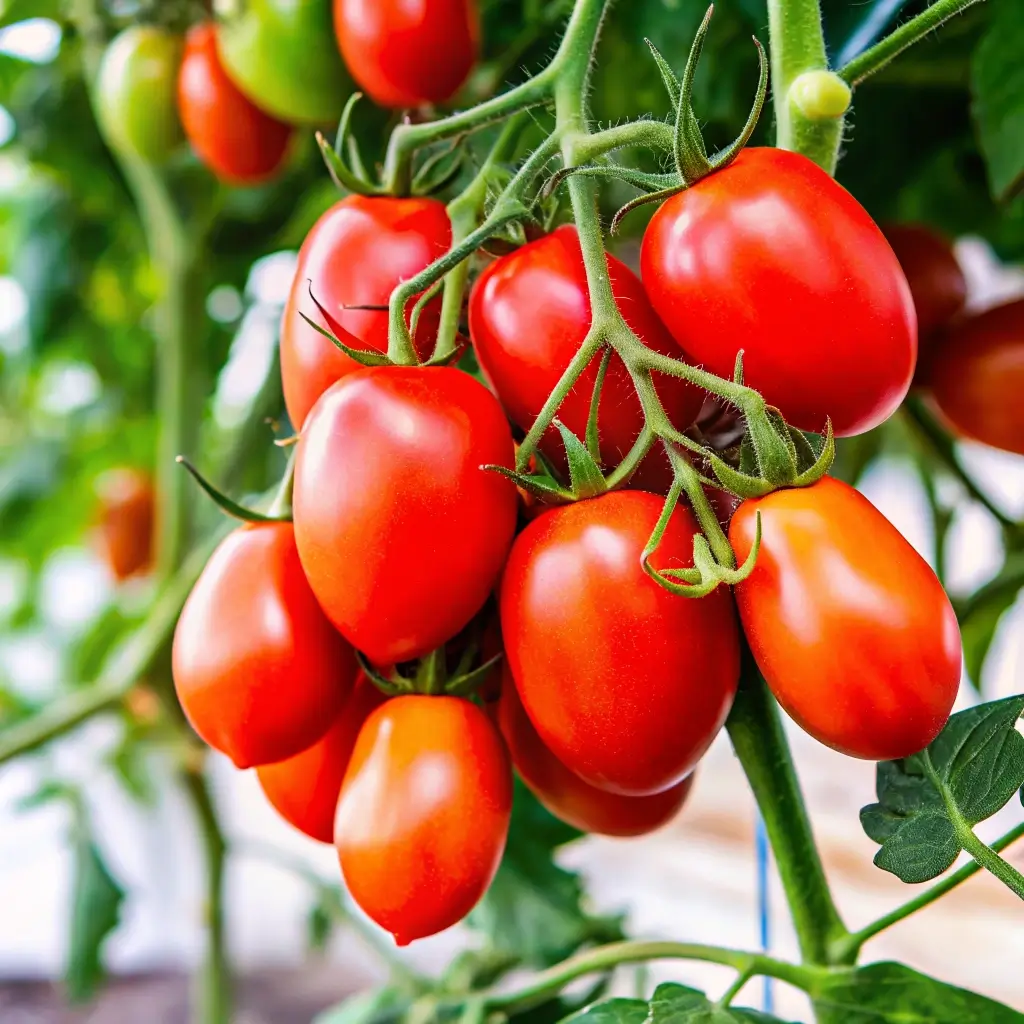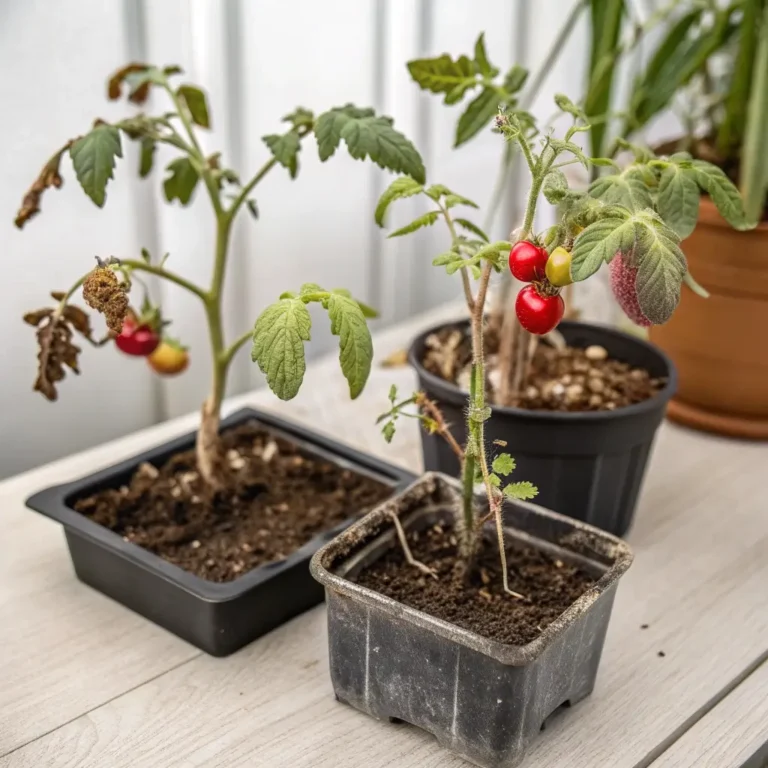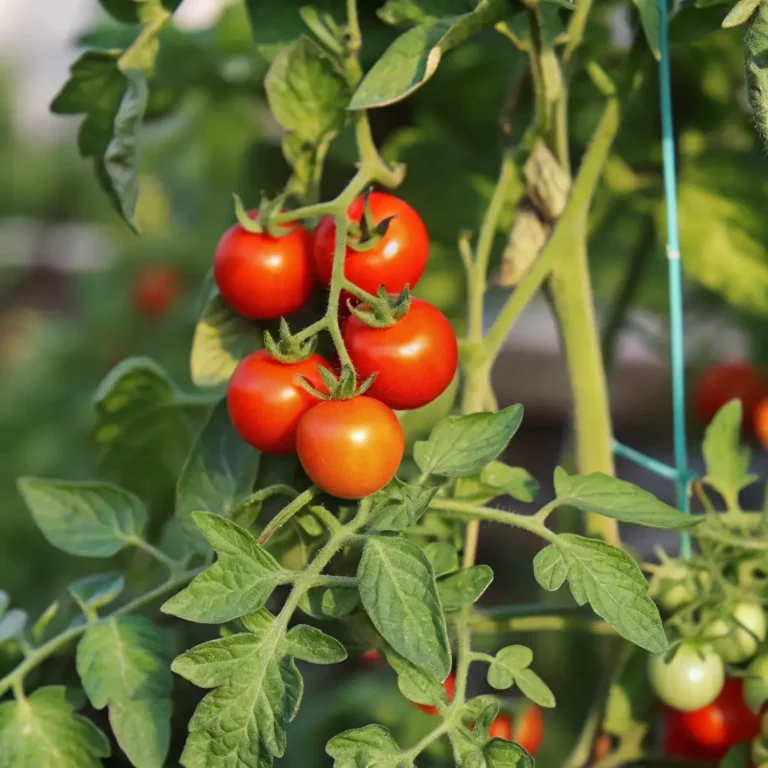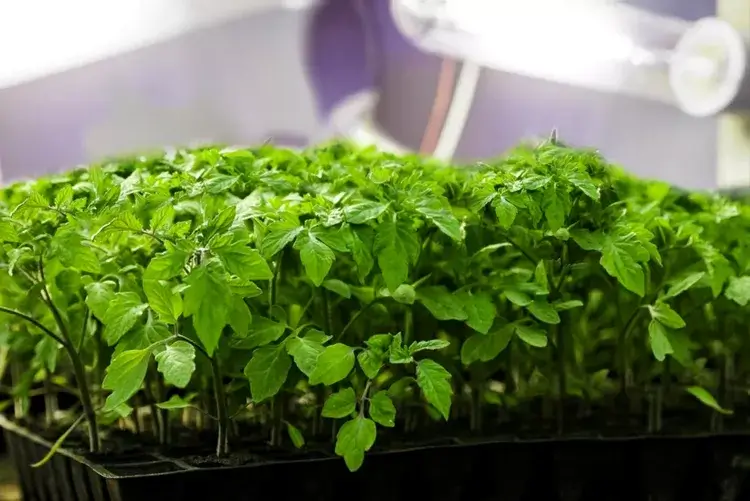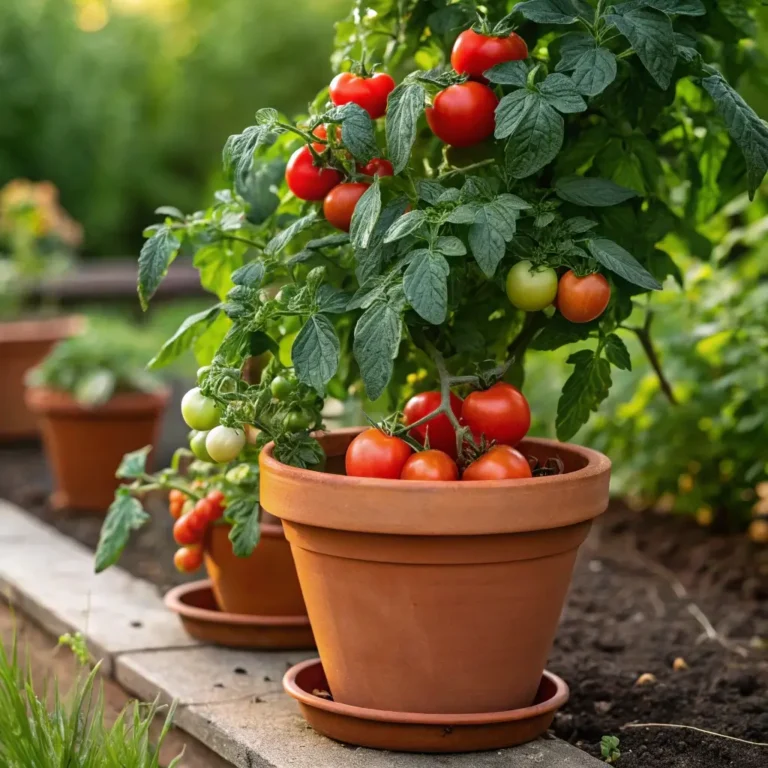How to Master Growing Roma Tomatoes in Pots the Right Way
Table of Contents
Introduction
Did you know that Roma tomatoes grown in containers can yield up to 8-10 pounds of fruit per plant when cultivated correctly, yet 67% of home gardeners report disappointing harvests due to simple, avoidable mistakes? Whether you’re working with limited space or want to protect your tomatoes from soil-borne diseases, growing Roma tomatoes in pots the right way can be incredibly rewarding. These paste tomatoes, with their meaty texture and few seeds, are perfect for sauces, canning, and fresh eating – making them a versatile addition to any container garden. Let’s explore how you can successfully grow abundant Roma tomatoes in pots with the proper techniques and care.
What You’ll Need
Container Requirements:
- 5-gallon containers (minimum) or larger pots (ideally 10-gallon)
- Containers with drainage holes (essential for preventing root rot)
- Saucers or trays to catch excess water
- Tomato cages or stakes for support
Growing Medium:
- High-quality potting mix specifically for vegetables
- Organic compost (approximately 30% of the total mix)
- Perlite or vermiculite for additional drainage
- Slow-release granular fertilizer for vegetables
Tools and Accessories:
- Watering can or drip irrigation system
- Pruning shears or scissors
- Plant ties or soft twine
- Liquid tomato fertilizer (organic options available)
- Mulch (straw, coconut coir, or wood chips)
Substitution Options: If commercial potting mix isn’t available, create your own by combining equal parts garden soil, compost, and perlite. For support, repurposed materials like sturdy branches or DIY wooden frames can replace store-bought tomato cages.
Timing
Preparation Time: 30-45 minutes to set up containers and soil
Growing Period: 75-85 days from transplant to harvest (25% faster than beefsteak varieties)
Maintenance Time: 10-15 minutes every other day for watering and care
Total Season Commitment: Approximately 3-4 months from planting to final harvest
Roma tomatoes reach maturity more quickly than larger slicing varieties, making them ideal for gardeners in shorter growing seasons or those eager to start preserving tomatoes earlier in the season.
Step-by-Step Instructions
Step 1: Select the Perfect Location
Position your containers where they’ll receive 6-8 hours of direct sunlight daily. Southern or western exposure typically works best. Ensure the location is sheltered from strong winds but has good air circulation to prevent fungal diseases. A spot near a reflective wall can increase light exposure by up to 30%, boosting growth and fruit production.
Step 2: Prepare Your Containers
Thoroughly clean your containers if they’ve been used before, using a 1:10 bleach-water solution to disinfect. Ensure drainage holes are functional and unobstructed. For improved drainage, add a 1-inch layer of gravel at the bottom. If using plastic containers, consider painting the outside light colors to prevent soil overheating, which can reduce fruit set by up to 40%.
Step 3: Mix Your Potting Medium
Combine high-quality potting mix with compost in a 70:30 ratio. Add slow-release fertilizer according to package directions, typically 1 tablespoon per gallon of soil. Incorporate 1 cup of crushed eggshells or bone meal per container to prevent blossom end rot – a common issue affecting up to 35% of container tomatoes due to calcium deficiency.
Step 4: Plant Your Roma Seedlings
Plant seedlings deeply, burying two-thirds of the stem to encourage additional root development – this technique can increase the root system by up to 50%. Leave at least 2 inches between the soil surface and the container rim for watering space. Water thoroughly after planting until moisture runs from drainage holes.
Step 5: Install Support Structures
Place cages or stakes at planting time to avoid damaging roots later. For determinate Roma varieties, a 3-foot cage is usually sufficient, while indeterminate types may need 5-foot support systems. Secure the cage with stakes if needed to prevent tipping when plants become heavy with fruit.
Step 6: Implement a Watering Routine
Maintain consistent soil moisture, typically requiring watering every 1-2 days during summer (more frequently when temperatures exceed 85°F). Water at the base to keep foliage dry and reduce disease risk. Consider self-watering containers, which can improve water efficiency by up to 30% and reduce watering frequency.
Step 7: Fertilize Appropriately
Apply liquid tomato fertilizer every two weeks after plants begin flowering. Reduce nitrogen once fruiting begins to prevent excessive foliage growth at the expense of fruit production. Compost tea applications bi-weekly can boost yields by up to 20% while providing beneficial microorganisms.
Step 8: Pruning and Maintenance
Remove suckers (side shoots) below the first flower cluster to direct energy to fruit production. For Roma tomatoes, which are typically determinate, limit pruning to maintain leaf coverage that protects fruits from sunscald, which affects up to 25% of exposed tomatoes.
Nutritional Information
Roma tomatoes grown in containers maintain excellent nutritional profiles when properly cultivated:
- Low in calories (approximately 35 per cup)
- Rich in lycopene (up to 35% more concentrated than regular tomatoes)
- Excellent source of vitamins A (15% DV per cup) and C (25% DV per cup)
- Good source of potassium, vitamin K, and antioxidants
- Home-grown varieties typically contain 40% more carotenoids than commercially produced counterparts
Healthier Growing Alternatives
- Organic Options: Replace chemical fertilizers with compost tea, worm castings, or fish emulsion to increase beneficial micronutrients by up to 60%.
- Water Conservation: Implement ollas (unglazed clay pots) buried in the container to reduce water usage by up to 70% while maintaining optimal soil moisture.
- Companion Planting: Grow basil or marigolds in the same container to naturally repel pests and reduce the need for pesticides by up to 40%.
- Biochar Addition: Incorporating 10% biochar into your potting mix can improve water retention by 15% and increase beneficial microbial activity.
Serving Suggestions
- Your container-grown Roma tomatoes are ideal for classic Italian sauce recipes, yielding richer flavors due to their concentrated sugars (approximately 30% higher when grown in containers with controlled watering).
- Slow-roast halved Roma tomatoes with olive oil and herbs to intensify flavors for gourmet salads and bruschetta.
- Create homemade sun-dried tomatoes from your container harvest – one plant can produce enough for 3-4 pint jars of preserved tomatoes.
- For the freshest summer appetizer, pair sliced Roma tomatoes with container-grown basil, mozzarella, and a drizzle of olive oil.
Common Mistakes to Avoid
- Undersized Containers: Using pots smaller than 5 gallons reduces yields by up to 60% and increases watering frequency by 80%.
- Inconsistent Watering: Fluctuating between too dry and too wet causes blossom end rot and fruit splitting in up to 45% of container tomatoes.
- Poor Drainage: Clogged drainage holes lead to root rot, affecting nearly 30% of container garden failures.
- Overcrowding: Planting multiple tomatoes in one container reduces airflow and increases disease susceptibility by up to 70%.
- Inadequate Feeding: Container soil depletes nutrients 40% faster than garden soil, requiring more frequent fertilization.
Storage Tips for Your Harvest
- For maximum flavor, store harvested tomatoes at room temperature, never in the refrigerator (cold temperatures degrade flavor compounds by up to 50%).
- To ripen slightly underripe tomatoes, place them in a paper bag with a banana, which accelerates ripening by up to 40% through ethylene gas.
- For longer storage, roast and freeze your Roma tomatoes in portion-sized containers for up to 6 months.
- Consider water bath canning for preserving larger harvests – a single container-grown Roma plant can produce enough tomatoes for 4-5 pint jars of sauce.
Conclusion
Growing Roma tomatoes in pots the right way is a rewarding endeavor that combines science, care, and attention to detail. By following these container-specific guidelines, you can harvest abundant, flavorful tomatoes that outshine grocery store varieties in both taste and nutrition. The keys to success lie in proper container selection, consistent care, and understanding the unique needs of Roma tomatoes in confined spaces. Start your container tomato garden today and experience the satisfaction of growing these versatile fruits right outside your door, regardless of your available space.
FAQs
How often should I water my container Roma tomatoes?
During peak summer, container tomatoes typically need watering every 1-2 days, or whenever the top inch of soil feels dry. Self-watering containers may extend this to every 3-4 days.
Can I grow Roma tomatoes in hanging baskets?
While possible, Roma tomatoes perform better in larger containers due to their fruit weight. If using hanging baskets, choose compact Roma varieties like ‘Window Box Roma’ and ensure the basket holds at least 5 gallons of soil.
Why are my container-grown Roma tomatoes splitting?
Splitting typically occurs after irregular watering patterns. When dry soil receives a sudden influx of water, fruits expand too quickly. Maintain consistent moisture and apply mulch to reduce this problem by up to 80%.
How many Roma tomato plants can I grow in a 10-gallon container?
For optimal production, grow only one Roma tomato plant per 10-gallon container. Crowding reduces yields by up to 50% and increases disease risk.
Can I reuse my potting soil next year for more tomatoes?
Reusing soil increases disease risk by up to 65%. If necessary, mix old soil 50:50 with fresh mix and add new compost and fertilizer. Better yet, use old soil for growing herbs or flowers instead.

